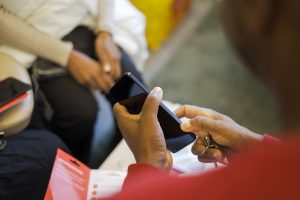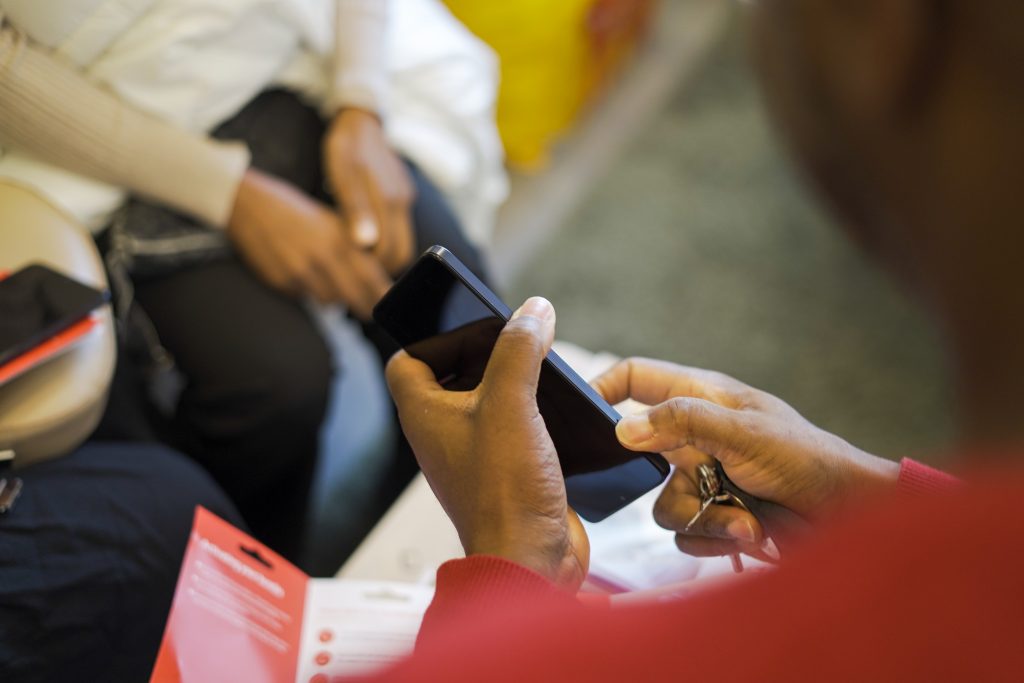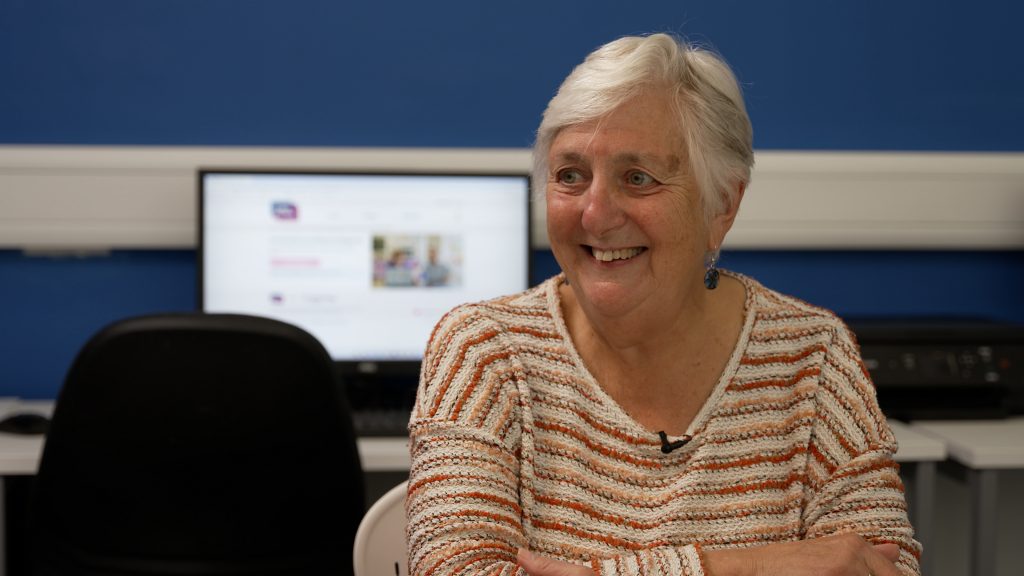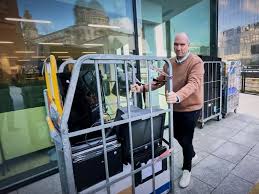Costing your scheme
“What might this cost us?” is a typical question asked when considering reusing tech for social good. The answer can vary depending on the reuse pathway that you choose for your organisation, what you choose to manage in house and what you choose to manage with a partner. Deciding a reuse pathway that works for your organisation can be influenced by what agreements you already have in place for IT Asset Disposal and what resource capacity and capabilities you have in-house to manage different aspects of the reuse pathway.
A simple consideration, if you plan to work with a refurbishment partner on a cost neutral model, is that you will likely need to contribute at least three fully functional devices in good cosmetic condition and under 5 years old to generate two suitable for onward donation. This is based on that partner covering their costs for collecting, data wiping, testing and adding operating systems where needed, providing a power supply, distribution and warranty.
Case study
A scaled solution: the National Device Bank
The national cost-neutral solution for organisations seeking to reuse their tech for social good

Case study
The National Device Bank
In 2022 Good Things Foundation went into partnership with B Corp certified Reconome to offer a cost neutral solution for organisations seeking to reuse their tech for social good. To date the partnership has collaborated with 75 organisations and processed 64,688 assets on behalf of those organisations, preventing 114,429Kg of e-waste and providing 17,631 digitally excluded people with a refurbished device.
The cost neutral model works by selling some of the tech collected to generate funds that cover the cost of collection, refurbishment and distribution (including secure data wiping and adding an operating system/accessories where relevant). The partners work closely together to understand the digital inclusion benefit of an IT ‘estate’ and are able to assess whether an organisation is better suited to the reuse or traditional disposal route.

Deciding a reuse pathway that works for your organisation
Different stages are identified in the Circular Electronics for Social Good model that are relevant in deciding on a reuse pathway. You could work through the table below, developed in the Public Sector Pioneers report, and identify which stages you have the capacity and capability to manage in-house and which stages would require working with a partner. At the same time, you can establish the costs for each stage depending on whether you manage in-house or with a partner. It could be that even if you have the capacity and capability to manage a stage in-house, there may be cost benefits to working with a partner.
| Stage in the Circular Electronics for Social Good model | We choose to do this: | |
|---|---|---|
| In-house (Consider costs) | With a Partner (Consider costs) | |
| Identifying end-of-life IT assets | ||
| Assessing what has potential for reuse and what has to be recycled | ||
| Data wiping to required standards | ||
| Testing to sort what is suitable for reuse, recycling, or disposal | ||
| Refurbishing to high standard for digitally excluded people | ||
| Pairing devices with free data connectivity | ||
| Deciding who receives devices | ||
| Distributing devices to recipients | ||
| Digital inclusion support for recipients | ||
| Reporting – ESG metrics and stories of digital inclusion impact | ||
| Secure storage and/or transport for each step of the journey | ||
If you already have an agreement in place with an IT Asset Disposal (ITAD) service for disposal of your IT Assets
Many organisations are already disposing of their tech responsibly through an IT Asset Disposal (ITAD) service. In this case, there will be a commercial agreement in place and it is likely that you will need to explore the implications of choosing to reuse tech for social good with your current ITAD partner. This could be something that needs to wait until contract renewal OR renegotiation could be possible. Some questions to ask and take into consideration:
- What does our current contract cost?
- Do we receive a rebate?
- If so, how do we currently utilise that rebate?
- What other options could we explore for utilising that rebate either with our ITAD or in-house?
- Does our ITAD partner already have a route for distribution of tech for social good?
- If yes, would we be willing to gift our tech to their route(s)?
- If no, would our ITAD be willing to return (or distribute to locations of our choice) devices that have been refurbished so that they can be reused for social good?
- What are the cost implications of requesting that a proportion of our tech is refurbished and reused for social good?
If you don’t have an IT Asset Disposal partner or they are unwilling or unable to refurbish devices to reuse for social good, it could be time to seek out a partner that can offer this service for you.
Some routes for IT Asset Disposal offer cost-neutral agreements with refurbishment partners who can recoup their costs through selling a proportion of devices to cover costs. This means that, as the contributing organisation, you have the opportunity to effectively offset some or all of the costs to collect, process, refurbish or recycle and distribute tech. For example, Good Things Foundation’s National Device Bank has a ‘free to use’ option subject to eligibility.
How your device distribution approach can influence costs
In the table, the distribution approach took into account deciding who receives devices, distributing devices to recipients, providing digital inclusion support for recipients and reporting – ESG metrics and stories of digital inclusion impact. You were invited to consider whether you would manage each of these in-house or with a partner.
Your current or prospective IT Asset Disposal partner may already have charitable routes through which devices can be reused, in which case you could explore if these align with your social impact goals and check what impact reporting will be available to you should you choose to take advantage of their established routes. It could be more cost effective to choose this pathway.
However, if you would prefer to decide who receives your devices, you will need to consider the resource required to do this, as well as take ownership of impact reporting. Even if you decide who receives devices, your IT Asset Disposal partner might agree to distribute devices to locations of your choice and build this into their costings accordingly. If not, you will also need to consider the costs to distribute devices to people in need.
Case study
Deloitte and Computacenter
Focused on how Deloitte works together with Computercenter to balance choice with cost and efficiency

Case study
Deloitte and Computacenter
Deloitte’s laptop donation programme scaled during the COVID-19 pandemic, transforming from a modest 100 devices annually to over 5,000! This rapid growth required collaboration across Social Impact, IT Asset Management, Finance teams and members of the Executive to secure the necessary funding.
A key consideration was the lost revenue from reselling the laptops – a conscious trade-off between profit and social responsibility. Securing leadership buy-in was essential to acknowledge this lost income.
Refurbishment costs were carefully analysed, ensuring each device was ready-to-use. This included:
- Repair costs: covering parts and labour for hardware and software fixes
- Software licensing: initially, new operating systems were installed. However, after surveying recipients (charities and schools), Deloitte discovered schools often re-wipe devices, making pre-installed software unnecessary. This is now an optional extra.
- Peripheral replacement: replacing missing or damaged accessories like power adapters.
- Battery replacement: Deloitte’s ITAD partner ensures all batteries meet
- Performance standards, replacing those with insufficient capacity.
- Testing, quality control & warranty: rigorous testing guarantees functionality before devices are shipped. Devices also come with a one-year warranty.
- Shipping fees: negotiating optimal shipping costs with their ITAD, considering minimum shipment quantities and varying delivery locations and times, was crucial for cost-effectiveness.
Deloitte leverages their ITAD’s scalable, fixed-fee service, providing consistent costs regardless of demand. This fixed-fee model, encompassing collection, data sanitisation, and functionality checks, helps to ensure recipients receive fully functional laptops, maximising the programme’s positive impact.

Savings and trade offs
- Where organisations are currently paying for IT Asset Disposal, there is the potential to seek out cost-neutral services that can offer savings for those organisations alongside the social impact benefits brought about by reusing tech to support in fixing the digital divide.
- Research undertaken by Deloitte, Circular Electronics Partnership and Good Things Foundation found that most organisations were happy to trade in their rebates for digital inclusion benefit, however, for public sector organisations this might require some negotiation if rebates are being reinvested into procurement budgets.
- For every £1 invested in digital inclusion there is an estimated £9.48 return on investment, factoring this into your cost benefit analysis is vital!
- Be clear on the trade-offs between what is managed in-house versus with a partner, where to focus your staffing and choosing what to have as a fixed versus variable cost.
- For all organisations, but particularly public sector organisations, it is important to take into account the future sustainability of resources and staffing to establish and run a reuse initiative. Considering the immediate trade-off of maintaining complete control with an in-house scheme, is this approach sustainable in the long run?
- Public sector organisations might choose to charge a small amount for the devices they distribute in order to recoup some cost.
Case study
Greater Manchester Combined Authority: Trafford Borough Council
Affordable refurbished devices for people facing digital poverty

Case study
Trafford Borough Council
“As a local authority, we work closely to support families and residents who are facing digital poverty, amongst many other barriers. Due to high demand for donated devices, we recognised that while some households cannot afford a device at all, others on low incomes could benefit from access to a subsidised option.
“To address this, we offer a portion of our refurbished devices to Trafford residents on means-tested benefits, providing Grade A laptops for £60. This approach empowers residents to get online and helps cover refurbishment costs – enabling us to support even more people in need.
“For those unable to afford a subsidised device, we gift laptops through referrals from social workers, housing teams, and other internal services who help us identify residents most in need of this support.“

Case study
Building the business case: Deloitte
“The programme’s success lies in its ability to address digital inclusion while perfectly aligning with Deloitte’s ESG goals.“

Case study
Deloitte
The COVID-19 pandemic starkly highlighted the digital divide, leaving many young people without the technology needed for education. This resonated deeply with Deloitte employees, sparking a powerful movement for change. One colleague’s suggestion directly to UK CEO Richard Houston resulted in the significant expansion of Deloitte’s device donation programme.
Building the Business Case:
The programme’s success lies in its ability to address digital inclusion while perfectly aligning with Deloitte’s ESG goals. It’s a powerful example of shared value, demonstrating how business operations can drive positive social impact. Beyond supporting beneficiaries, the programme boosts employee engagement, allowing colleagues to nominate charities and schools they care about, reinforcing Deloitte’s commitment to sustainability and social responsibility. This holistic approach proves that social impact and business value are mutually reinforcing, creating a stronger, more sustainable, and purpose-driven organisation.
Key benefits include:
- Social Impact & ESG Alignment: Directly supporting Deloitte’s Social Impact focus on skills, digital inclusion, sustainability, and climate goals, creating a fairer playing field and breaking down educational barriers. Over the last five years, over 46,000 people have benefited from laptops
- Environmental Benefits: Reusing devices significantly reduces carbon emissions compared to manufacturing new ones. Since August 2024 alone, Deloitte has avoided 672,000 kilos of CO2 emissions. Recycling also minimizes e-waste and conserves resources, aligning with circular economy principles and showcasing environmental responsibility, which are important for Deloitte’s sustainability goals.
- Employee Engagement: Since their people can nominate a charity or school to receive laptops, the programme fosters a strong sense of engagement, empowering employees to contribute meaningfully to worthy causes. Knowing their upgraded laptops are helping digitally excluded individuals creates a powerful connection with the firm’s sustainability and social impact ambition.
“By extending the life of our equipment, we not only reduce e-waste but also support digitally excluded individuals with the tools, skills, and confidence they need to get online. Digital inclusion is a powerful enabler that cuts across many National Grid’s social impact priorities—helping to build community resilience, develop essential skills, and unlock pathways to employment and income security. These outcomes deliver a tangible social value, and make the business case for this approach clear.”

Making a business case
- A reuse programme could help you to hit organisational KPIs or targets. Two key areas that such a programme will address are e-waste, environmental sustainability or circular economy goals, and social value and/or community-based improvement. A reuse scheme could be related to Net Zero Targets, improving supply chain resilience, reducing inequalities and improving wellbeing and/or skills in your community. It could also support an increase in those accessing your services online.
- You will need to take into consideration any legal & compliance requirements. Put in place a Data Protection Impact Assessment (DPIA).
- If disposing of equipment is already a cost for your organisation, consider how changing the way you do things will meet that cost or whether there is potential to offset, reduce or eliminate that cost.
- If your organisation already recycles, or disposes of, devices via a partner that provides a rebate, you will need to show how a reuse programme will be different and justify the benefit beyond the value of that rebate. For example, mitigating the cost of digital (and social) exclusion, creating savings through individuals being better able to use digital services, reduction in environmental footprint.
- In-kind benefits that a reuse programme might have for your organisation could include
- Positive tax implications if you used to receive a rebate that becomes a donation
- Increased employee satisfaction in knowing that they are engaging with Corporate Social Responsibility
- A calculable financial value if you are accepting refurbished devices and therefore no longer need to procure them
Case study
Making it business as usual: Liverpool City Region
Liverpool City Region Combined Authority donate devices as BAU

Case study
Liverpool City Region
Case study
A commitment to responsible business: National Grid
“By extending the life of our equipment, we not only reduce e-waste but also support digitally excluded individuals”

Case study
National Grid
“At National Grid, our decision to reuse and donate IT equipment—rather than simply recycle it—is grounded in our commitment to being a responsible business. In today’s connected world, access to devices is essential for engaging with services, education, employment, and increasingly, the opportunities of the energy transition.
“By extending the life of our equipment, we not only reduce e-waste but also support digitally excluded individuals with the tools, skills, and confidence they need to get online. Digital inclusion is a powerful enabler that cuts across many National Grid’s social impact priorities—helping to build community resilience, develop essential skills, and unlock pathways to employment and income security. These outcomes deliver a tangible social value, and make the business case for this approach clear.”
